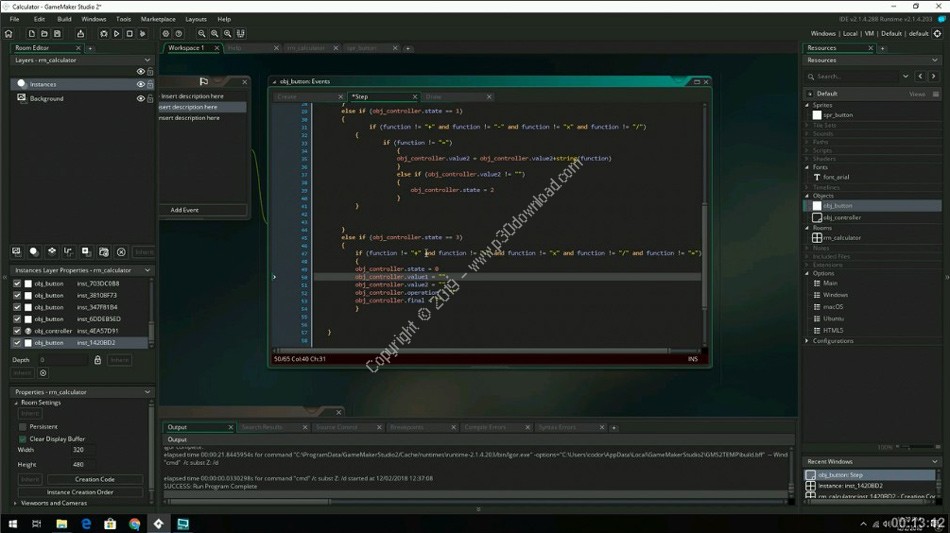

The editor, on the other hand, is a bear to work with. However, Unity is very specific about its implementation and can feel counter-intuitive at times. I really enjoy working in C#, and anything code-related has been a relatively pain-free experience. My experience with Unity thus far has been a mixed bag. The asset store is a great resource, and there's so much documentation, official and unofficial, out there that I was confident I could find an answer to any issue I might encounter.
#MAKE AN RPG WITH GAMEMAKER STUDIO 2 HOW TO#
Out of general interest, I had spent a lot of time in Unity doing tutorials and learning how to use the editor before attempting to remake the card game prototype with it. But this ultimately required me to learn another framework on top of an existing framework, which was less than ideal for my purposes.

This experience led me to check out boardgame.io, which can work in tandem with React. React DnD), but I found that with a card game, I needed a more elegant solution for dropzones, as Hacker Battles is very specific about which cards can be played where, and when. There are some libraries out there that can help with basic drag-and-drop (e.g. I found state management to be a breeze (it's what React does, after all), whereas implementing simple drag-and-drop functionality for cards proved to be a nightmare.
#MAKE AN RPG WITH GAMEMAKER STUDIO 2 GENERATOR#
Having already built a character generator prototype in React for a tabletop RPG I designed, I thought a natural step would be to give the framework a spin for the card game. You can access a playable version here, and although the game is further along than the live prototype would suggest, this version is pretty stable (in Chrome at least). Given these requirements, I explored the following frameworks and engines to see which one would be most suitable for making my game.instead of actually making the game (I'm happy to say that now that I've settled on a framework, I'm making a lot more progress). But suffice it to say that, as a card game, it requires a potential digital framework to support basic things like state management, UI, drag-and-drop UX, and back end hooks for implementing multiplayer. You can read more on our website or watch how it's meant to be played in this video. My game, Entromancy: Hacker Battles, is a competitive cyberpunk card game with TCG-light mechanics. You can also skip to the bottom for the TL DR. So depending on your requirements, the below information might be of differing value to you.Īdditionally, this experience is based on development for a 2D card game, so I won't be discussing 3D engines, physics, etc. I'm also not comparing pricing, back end functionality, or platform deployment. I'm hoping the below info will be helpful for anyone else who is shopping around for an engine or framework.īunch of caveats: I'm not attempting to sell one engine or framework over the others, and I'm also not suggesting that one or any of these frameworks will work for your game better than another.

I have some background in JavaScript and C#, and I set out as many do: by spending an inordinate amount of time in "what framework should I use" threads and reading documentation without actually making anything.įlash forward many months, and I've now spent more time working in (and wrestling with) React, Unity, Godot, Construct 3, Game Maker Studio 2, and Phaser 3, in an attempt to understand what makes them tick.Īdmittedly, I think I've spent way more time in each of them than necessary to make my little game, and I probably could have just stuck with the first one and blundered my way through the prototype. In designing a new card game, I decided to build a digital prototype to help me run simulations and easily share a proof of concept with collaborators.


 0 kommentar(er)
0 kommentar(er)
